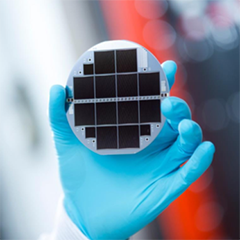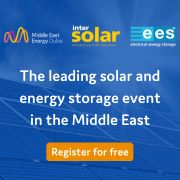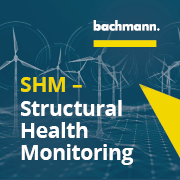Researchers at the Fraunhofer Institute for Solar Energy Systems ISE together with the company EV Group (EVG) have developed a new silicon-based multi-junction solar cell, which can convert exactly one-third of the incident sunlight into useful electricity. This newest result is now published in the renowned scientific magazine Nature Energy.
Silicon solar cells dominate the global photovoltaic market today with a share of 90 percent. With ever new technological developments, research and industry are nearing the theoretical efficiency limit for semiconductor silicon. At the same time, they are forging new paths to develop a new generation of even more efficient solar cells.
The Fraunhofer researchers achieved the high conversion efficiency of the silicon-based multi-junction solar cell with extremely thin 0.002 mm semiconductor layers of III-V compound semiconductors, bonding them to a silicon solar cell. To compare, the thickness of these layers is less than one twentieth the thickness of a human hair. The visible sunlight is absorbed in a gallium-indium-phosphide (GaInP) top cell, the near infrared light in gallium-arsenide (GaAs) and the longer wavelengths in the silicon subcell. In this way, the efficiency of silicon solar cells can be significantly increased.
“Photovoltaics is a key pillar for the energy transformation,” says Dr. Andreas Bett, Institute Director of Fraunhofer ISE. “Meanwhile, the costs have decreased to such an extent that photovoltaics has become an economically viable competitor to conventional energy sources. This development, however, is not over yet. The new result shows how material consumption can be reduced through higher efficiencies, so that not only the costs of photovoltaics can be further optimized but also its manufacture can be carried out in a resource-friendly manner.”
Already in November 2016, the solar researchers in Freiburg together with their industry partner EVG demonstrated an efficiency of 30.2 percent, increasing it to 31.3 percent in March 2017. Now they have succeeded once again in greatly improving the light absorption and the charge separation in silicon, thus achieving a new record of 33.3 percent efficiency. The technology also convinced the jury of the GreenTec Awards 2018 and has been nominated among the top three in the category “Energy.”






















